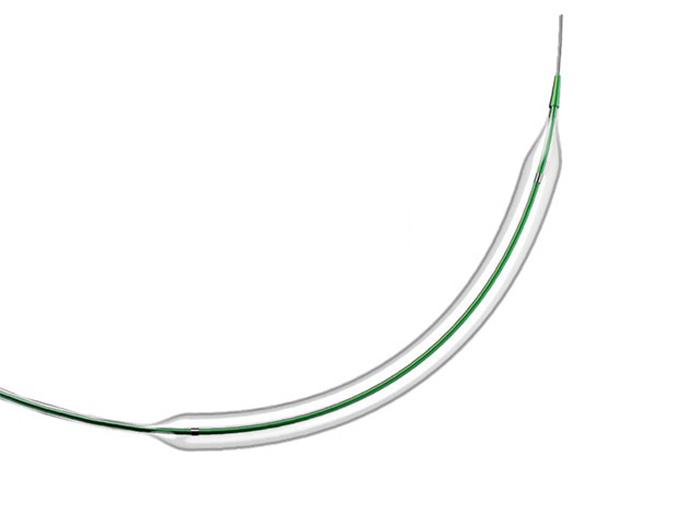the core of our corporate values
Selection of PTA Balloon Diameter for Arteriovenous Fistula
PTA balloon is the main tool for percutaneous transluminal angioplasty of arteriovenous fistulas. The choice of balloon diameter is an important and often tangled issue.
The selection of the diameter of the balloon is nothing more than considering the effect of dilation and the risk of vascular rupture. The larger the balloon, the better the dilation effect may be, but at the same time, the risk of rupture is also higher.
We always hope to find some rules, which can satisfy the balance between efficacy and risk as much as possible, and also have economic considerations, and hope to use a balloon to solve the problem as much as possible.
But for an individual, the law only represents the probability of a problem, not a guarantee, so it needs to be constantly explored.
Ⅰ. Issues to be considered when choosing the diameter of the PTA balloon include:
1. The inner diameter of the normal blood vessels around the stenosis;
2. The desired inner diameter after expansion;
3. The thickness of the stenotic local vessel wall;
4. The location of the narrow;
5. Experience of previous dilation of stenosis;
6. The compliance of the balloon;
7. The consequences of vascular rupture.
Ⅱ. The inner diameter of the blood vessels around the PTA balloon
If the inner diameter of the blood vessel before and after the stenosis is not much different, the problem is relatively simple. Generally, 110% of the inner diameter of the normal blood vessel is the diameter of the selected balloon.
The "normal inner diameter" here is taken before or after stenosis? When the difference between the inner diameters of the blood vessels on both sides of the stenosis is very small, for example, the difference is less than 1 mm, the front and rear may be fine, but a little more is taken downstream of the stenosis, because the inner diameter of the upstream of the stenosis is usually larger, and the balloon selected according to this inner diameter will be relatively larger. At this time, it can be considered to average the inner diameters of the anterior and posterior blood vessels, that is, add them and divide them by 2, and take this as the "normal diameter".
The choice of PTA balloon for venous dilation is usually "oversize", which means that the diameter of the balloon is slightly larger than the inner diameter of the blood vessel, but I think the so-called "oversize" is often not necessarily true to exceed the inner diameter of the blood vessel, because we often measure the inner diameter of the blood vessel. It is not the maximum inner diameter of the vein, because the blood vessel wall is elastic. With the changes of blood flow resistance and intravascular pressure, the inner diameter of the blood vessel will also change. If the venous outflow tract is compressed, the inner diameter will increase. At this time, I am afraid that the inner diameter of the blood vessel has reached 110% of the original or even exceeded. From this point of view, the balloon selection of 110% is not excessive.
However, in many cases, the inner diameter of the blood vessel before and after stenosis is very different. At this time, even the average diameter of the balloon may be much larger than the inner diameter of the smaller side. Therefore, in order to reduce the risk of blood vessel rupture, the inner diameter may be larger than that of the smaller side. It may be appropriate to use the smaller side as a reference.
Another question is the result of "normal inner diameter x 110%", which is often not an integer, for example, it may be 5.6mm, so should the balloon choose 5mm or 6mm? One way to do this is to round up, say 5.6mm for a 6mm balloon.
Another way is to refer to the balloon's "pressure-diameter" table. There is a comparison table on the packaging of each PTA balloon, which tells us that the size of the balloon is not static. Under a certain atmospheric pressure, the balloon has a specific diameter, and the diameter of the balloon will increase slightly as the pressure increases, the magnitude of this increase is usually in units of 0.1mm, so when choosing the diameter of the balloon, you can consider the diameter when the balloon pressure is close to the burst pressure. If this diameter is similar to the diameter calculated by 110%, you can consider choosing this balloon. At this time, in order to ensure that the stenosis can be expanded as much as possible and the balloon diameter is not too large.
Pro in manufacturing quality peripheral vascular equipment, Zylox Tonbridge provides varied balloon catheters with varied diameters, including PTA balloon catheters, high-pressure balloon catheters, balloon dilatation catheters and drug-coated PTA balloon catheters. Feel free to contact us at any time!










